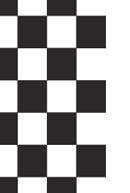

|
The
Don't Diet Digest
Stop
Dieting. Start Eating.
www.RealPeopleDontDiet.com TO SUBSCRIBE: Send e-mail to dontdietdigest AT aweber.com THIS ISSUE: Get Organized and Get Happier (And Lose Weight!) ==================================================
================================================== **The 2009 Edition Of "Real People Don't Diet" At A Special Price** Totally updated for 2009, the new edition of "Real People Don't Diet" will show you how you can lose weight--and keep it off--using a simple math strategy. The 2009 edition also includes two new bonus booklets: "Real People Don't Diet Recipes" and "Real People Don't Diet Success Stories". Peek over Cate's shoulder as she prepares meals in her own kitchen, proving you can eat "real" food and still lose weight. Get inspired by other RPDD'ers who have lost weight and kept it off--without dieting. Best of all, the 2009 version is at a slightly reduced price from the 2007 version. Why? Because the "little people" have to bail each other out. The government sure won't do it for us. Pick up your 2009 version of "Real People Don't Diet" today! ================================================== ================================================== Are you really struggling to lose weight?
If you haven't read "Real People Don't Diet", then
your head is
probably swimming with all the different options
available to you!
You could sign up to have diet food delivered.
You could join one
of those groups that charge you to get weighed every
week. You
could eat a special cereal for a certain period of
time. You could
buy weight-loss supplements. Maybe you should
drink more water;
eat more vegetables; stop eating carbs altogether;
never have
sweets again; count calories; watch your fats; join
the gym; buy a
treadmill.
And so on.
There are so many options--and many of them make
sense. It's
really overwhelming.
So let me suggest something different. No--it's
not in my book. But
it sure fits with our strategy, and it's something
I've already begun
implementing.
Do just ONE thing and you will lose weight:
REDUCE YOUR PORTIONS.
In other words, check your dishes...are they bigger
than they used to be?
During the holidays/winter season I have special
dishes that are bright
and festive, to help ease the winter blues a
bit. They sit on top of a few
of my regular dishes. I can easily see that
they're about 30% bigger!
Why? Well, during typical holiday meals, we
really pile the food on,
don't we?
If you think about it, I'm sure you'll realize that
portion sizes in American
restaurants--fast-food and otherwise--have increased
significantly over
the years. I would venture to say portion sizes
are up 40-50%.
When I worked at McDonald's during my teen years, a
"large" soft drink is
now what's called the "medium"-sized drink. Today's
"large" fries were called "extra-large" fries 20 years ago.
Getting back to dishes, I bet you'd find the plates
and bowls in your cabinet right now are bigger than the ones your
mother used.
So how can you go about reducing portion sizes?
Well, there's two things you have to realize:
1) Portion-driven eating is mostly visual, and
2) You can easily trick your brain by changing what
you see.
If you see a picture menu at McDonald's with the
largest meal featured,
your brain automatically rejects the smaller-sized
choice, because you
think it "won't be enough". If you only fill
half a plate, but it's a larger-
sized plate than you normally use, your brain will
think it "won't be
enough" food, even though it could be the exact same
amount you're
used to eating.
Don't believe me? Try it. Eat your next
meal off a larger plate, maybe
even a serving platter. Give yourself the same
amount of food you
normally eat. See whether your don't have to
resist the urge to believe
that you need "more". It's just a brain thing!
So how do you make this work?
Get different dishes. Or buy yourself a special,
smaller plate that
you'll use for your meals. Don't look at the
fancy picture menu; look at
the actual cups and serving sizes of fast-food
items. (I buy the $1 small
fries at McDonald's--those little envelopes are
totally filled up, and are
actually only a few fries less than the more
expensive, larger portion. I
easily split them with one of my kids.) Always
order the lunch sizes, or
smaller portions, when you go out to eat.
You'll be completely amazed at how satisfied you are,
yet how much
less food you're eating. Why? Because your
brain is set to connect
hunger satiation with a full plate or tray.
So--give your brain the visual
it needs to send the right signal to your stomach!
Of course, it would be optimal if your plate was
mostly veggies, fruits
or lean meats, but if you really can't go there right
now, and you've
been frustrated for so long just trying to lose some
weight...
...simply eat smaller portions.
And let me know how it works for you.
(If you haven't read "Real People Don't Diet", give it
a try at the new
reduced price, just for these trying times. The
strategy we used
fits right in with the reduced portion strategy I've
outlined above. It will
give you a simple, effective way to lose weight
without dieting. Combine
it with reduced portion sizes and you must lose
weight--it's mathematically
impossible not to!)
=====
Until next
week--keep it real!
Warmly,  http://www.RealPeopleDontDiet.com REDISTRIBUTION POLICY I encourage you to forward this newsletter to your friends, associates, and colleagues for their review and enjoyment. However, please do so only by sending it in full, thereby keeping the copyright and subscription information intact. Also, if you wish to post this newsletter to a newsgroup or electronic discussion group, you may do so if you preserve the copyright and subscription information. Thanks. Copyright (c) 2009 www.RealPeopleDontDiet.com and Cate Brizzell
|
What's New
"Don't Diet Digest Archives"
RPDD Blog
Dieting Doesn't Work
